Alan Llavore | Office of Marketing and Communications | (909) 537-5007 | allavore@csusb.edu
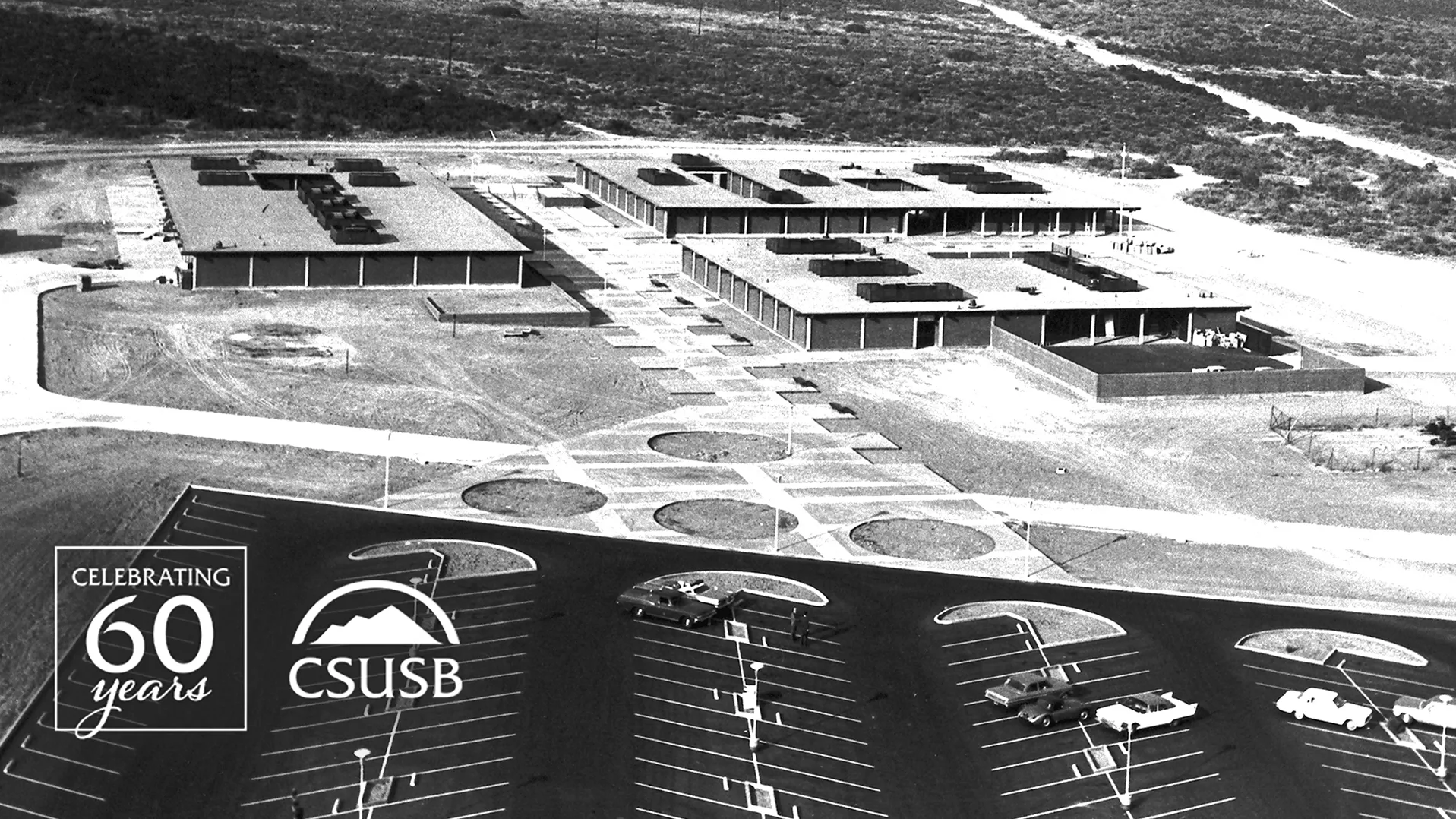
Academic year 2025-26 marks the 60th anniversary of the first classes held on the campus that would come to be known as California State University, San Bernardino. Those sixty years have seen tremendous changes, not only in the campus itself (which has expanded from San Bernardino to an additional, separate campus in Palm Desert) but also to the number of colleges, programs, degrees and students. As the world outside the campus has changed, CSUSB has continued to pursue the heart of its mission: serving the people of the Inland Empire and growing the success of individuals, families and communities through access to an outstanding institution of higher education.
This month, we will return to the 1960s, where it all began for CSUSB. Please note, though, that what would become the California State University system dates back to the 19th century. San José State University was founded in 1857, just seven years after California became the 31st state on September 9, 1850. Located in what had been California’s first capital (1849-1851), San José State was also the first institution of public higher education in California.
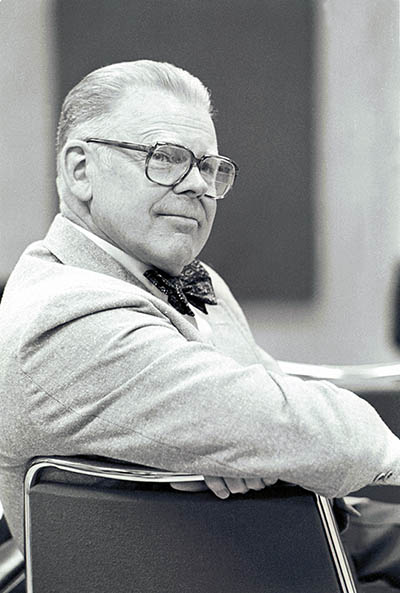
The year 1960 brought with it the Donahoe Higher Education Act, which served as the formal adoption of then-Gov. Edmund G. “Pat” Brown Sr.’s “Master Plan for Higher Education in California, 1960-1975.” It bears the name of recently deceased Assemblymember Dorothy Donhoe, who had served as chair of the Assembly Education Committee and who had been an advocate for the master plan.
The Donahoe Act clarified the roles that the University of California, the California State Colleges and the California Community Colleges would play in creating a higher education infrastructure in the state. State Sen. Stanford Shaw introduced the legislation for what was proposed to be “San Bernardino-Riverside State College.” The funds to purchase the site were allocated in 1961 and John M. Pfau (chair of the Social Sciences Division at Sonoma State College) was appointed the first president in 1962.
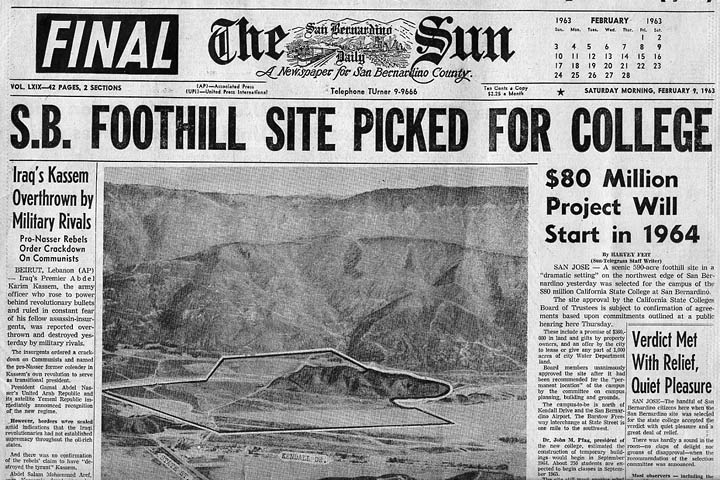
Twenty-six sites were considered, but a final decision was made on Feb. 8, 1963, CSUSB’s “Founders Day.” The 429 acres in San Bernardino included 50 acres of champagne vineyards. A library collection began to be assembled and stored in a warehouse at 731 South Lugo Ave. The college was re-named the California State College at San Bernardino (CSCSB).
1964 brought the college’s formal mission statement and groundbreaking for the three initial one-story buildings to be built on 13 acres at the western edge of campus. They included a 21,000 square-foot Administration building (still in use today for the same purpose — the president’s office remains where it was in 1964); a 19,500 square-foot library-classroom building, which held 52,000 volumes and contained 13 general classrooms; and a 15,300 square-foot science and activity-cafeteria building. The complex also included a 285-car parking lot.
“It is the purpose of The California State College at San Bernardino to provide opportunities for education in the finest tradition of the liberal arts and sciences. The College is committed to the proposition that while education may have many valuable purposes, it should be fundamentally an intellectual enterprise. Thus, the academic program of the College is designed to encourage intellectual growth, excellence in the basic skills of educated men, and ample exposure to the liberal arts and sciences.”
Michael Burgess
“The Coyote Chronicles: A Chronological History of California State University, San Bernardino, 1960-2010,” page 32
The official campus occupation date was Aug. 31, 1965. CSCSB’s official classes began on Oct. 5. There were 29 faculty and 61 staff on hand to lead and support the 273 students: 90 freshmen and 103 juniors. State College Parkway, the four-lane thoroughfare linking the college to the Barstow Freeway (later renamed as I-215), was officially opened.
1966 brought the official inauguration of President Pfau as CSCSB’s founding president. A student government formed, and students voted for the golden condor as the college’s mascot and then, in a second vote a few months later, changed it to the St. Bernard dog. The initial school colors were brown and gold, which were replaced a few months later with brown and light blue. The first student pep rally was held, and President Pfau awarded letters to the college’s first “undefeated” football team. Cheers were led by Theta Psi Omega cheerleaders and song girls. Following the bonfire and rally, everyone adjourned for an outdoor dance. The steps of the college library served as a bandstand.
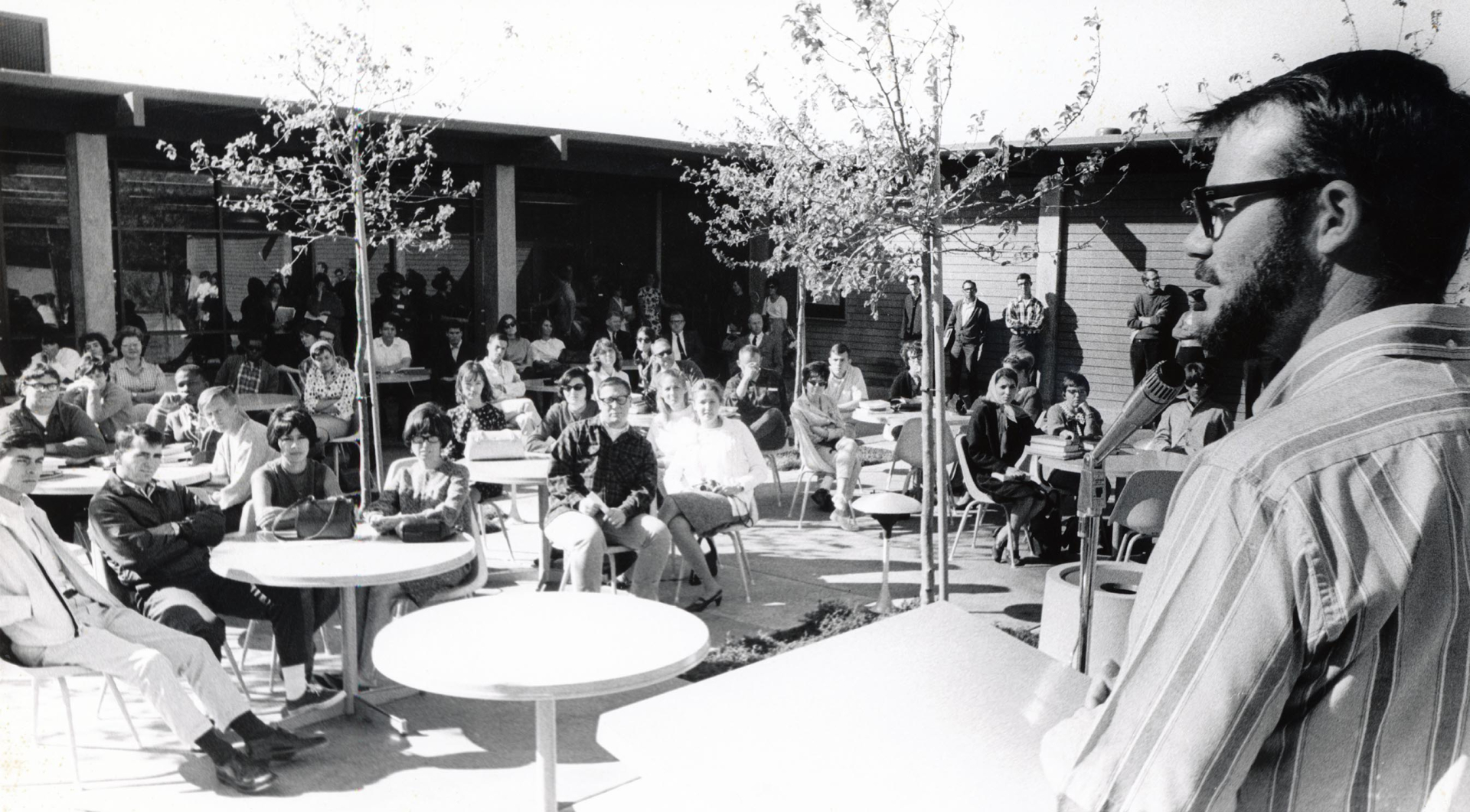
1967 marked the building and opening of the physical science and biology buildings. The first graduating class was composed of 59 members, five of whom graduated with honors. The first summer session was held, with 263 students attending. CSCSB now offered 14 majors to the 1,002 students who enrolled. Enrollments had increased 67% since 1966.
1968 brought with it the establishment of the Alumni Association and the opening of heating and air conditioning operations. The Physical Education building was completed. The groundbreaking took place for a new library-classroom building, and the first weekly guided tours of the campus were introduced. CSCSB started its fourth academic year with its third name: the “at” gave way to a comma to make the names of the 19 California state colleges as consistent in style as possible: California State College, San Bernardino. CSCSB was named one of the top 50 colleges in academic standing in the country.
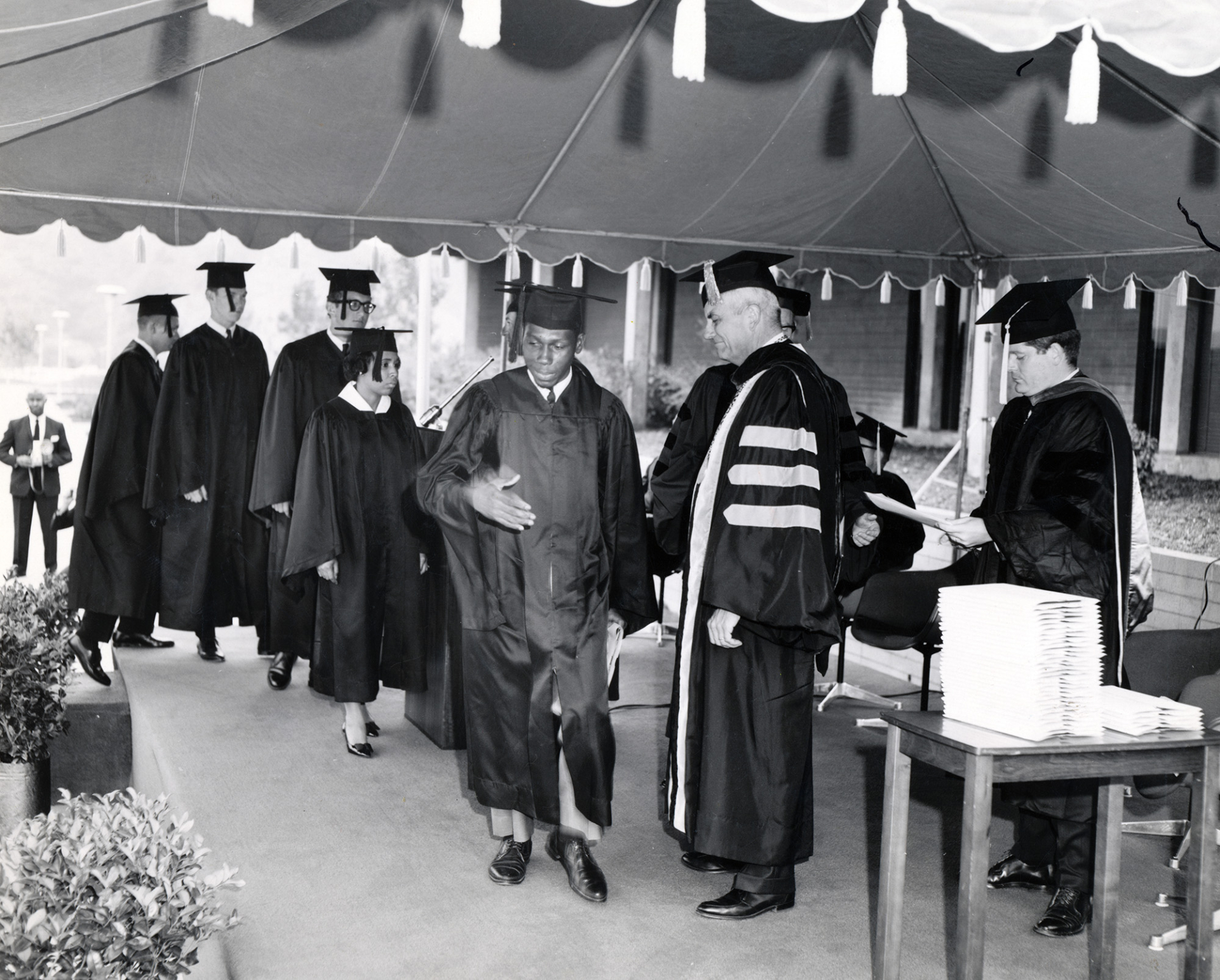
1969 brought the completion of the 10,830 square-foot physical plant building and 29,000 square-foot shops and yard. The college’s third annual commencement was the first to be held indoors, beginning at 8 p.m. in the CSCSB gym. One hundred and twenty-two degree candidates, out of 185 eligible to march, participated in the ceremony.
“There Once Was a College at Camelot,” the commencement address, was given by Louis H. Heilbron, former chairman of the California State Colleges Board of Trustees. CSCSB reaches its maximum capacity of 1,800 students. And the campus hosted its first homecoming: a barbecue cook-off for CSCSB alumni.
Interested in more? Visit the CSUSB History Timeline and the CSU History webpage.